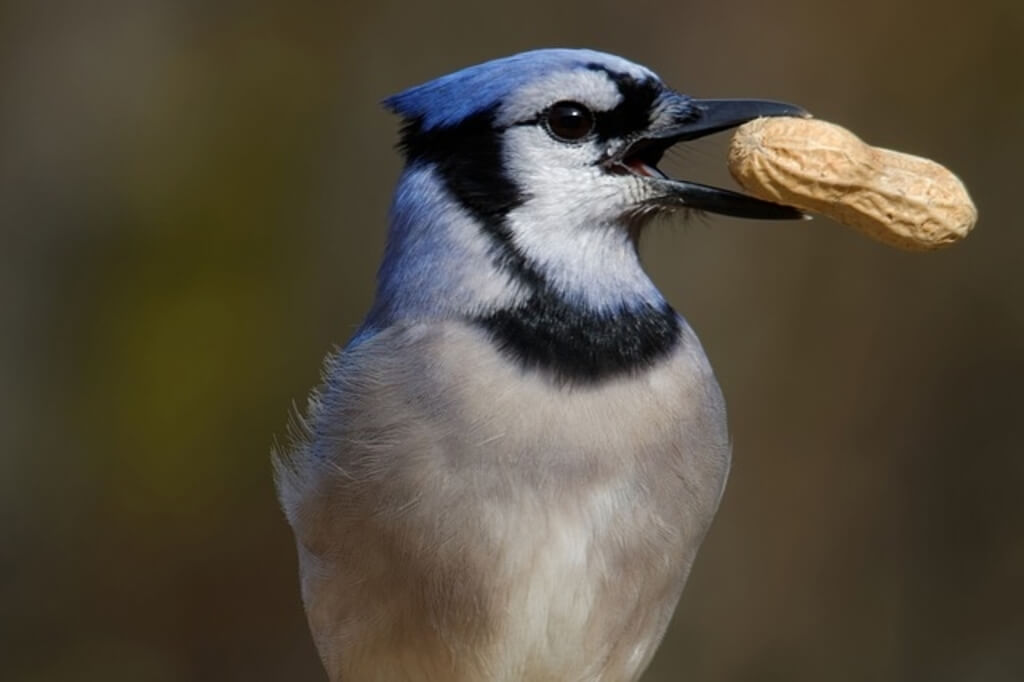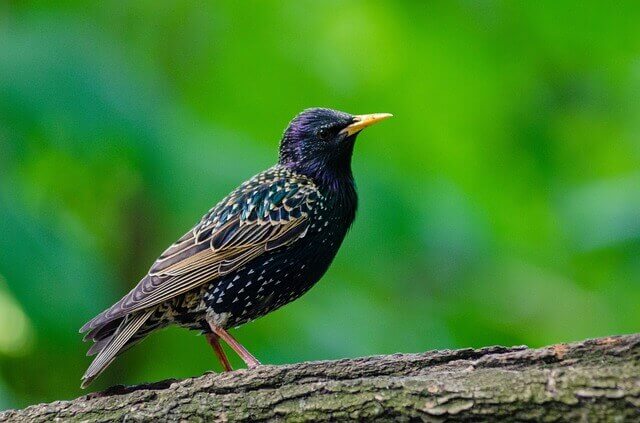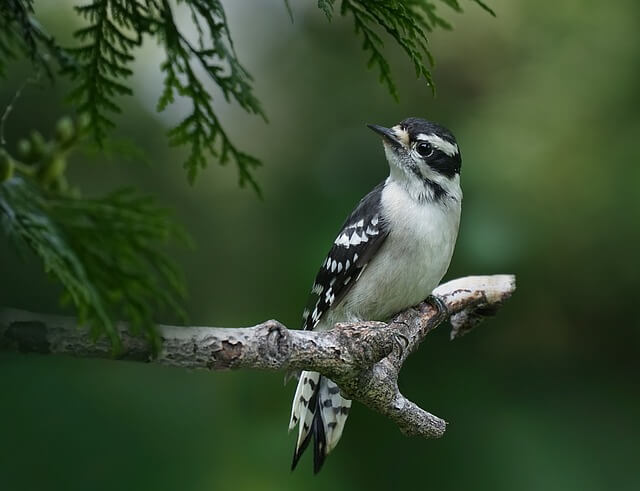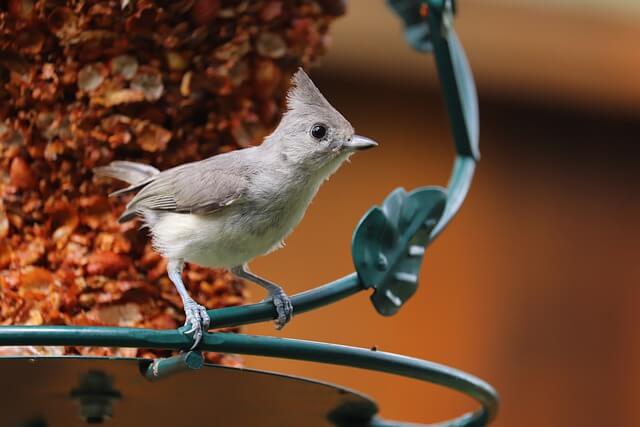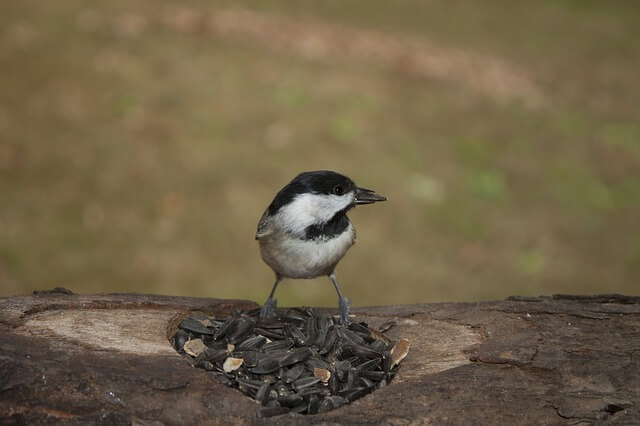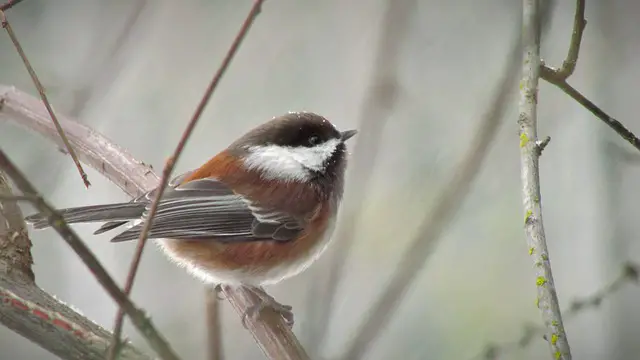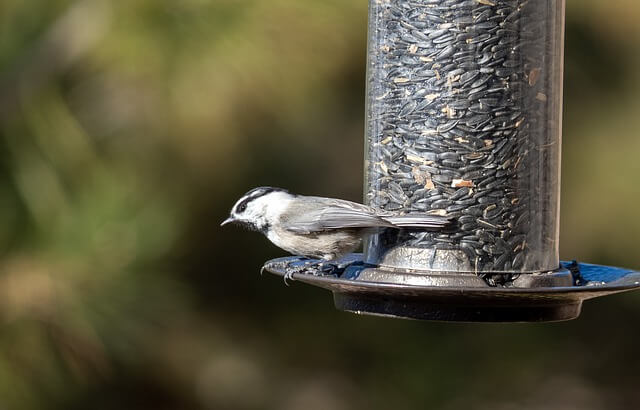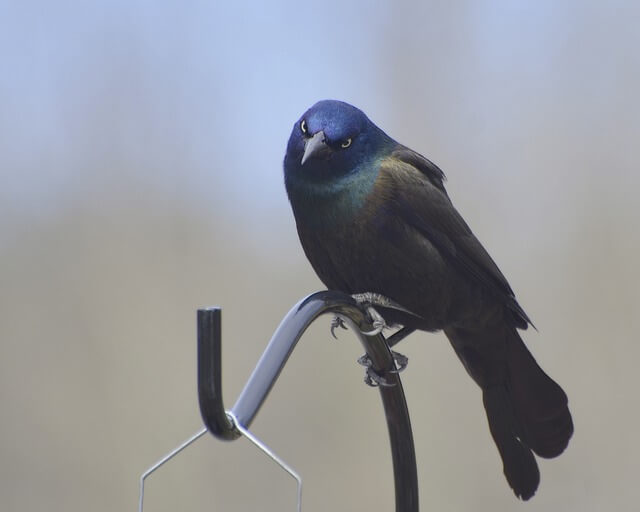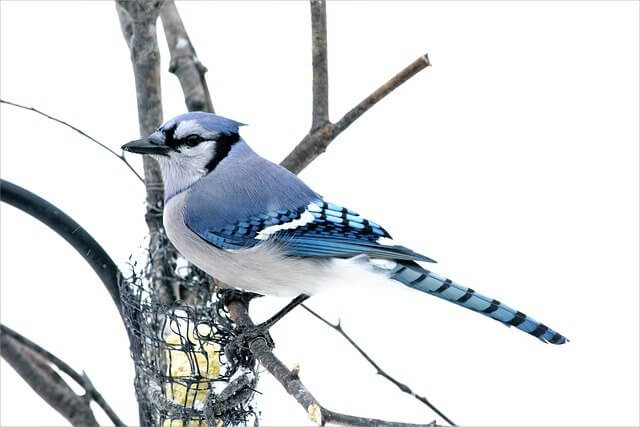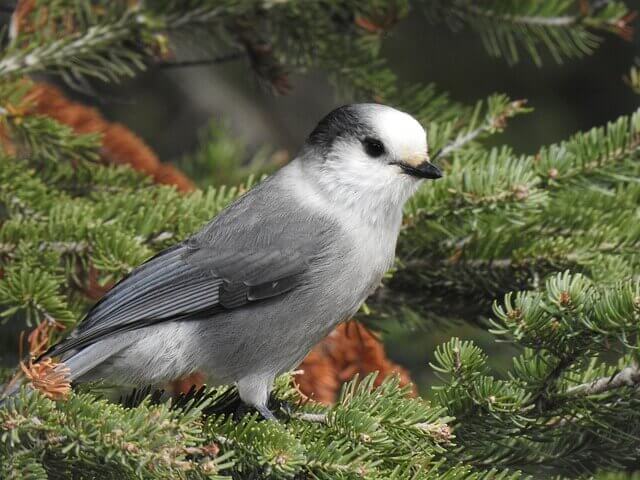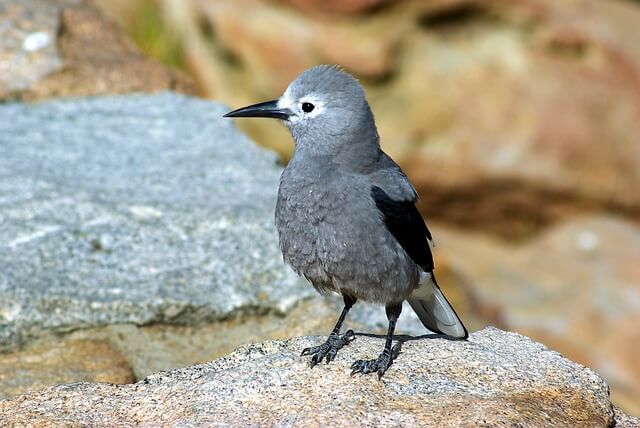Welcome to the ultimate guide to backyard birds that eat peanuts! If you’re an avid bird enthusiast or simply enjoy observing the winged visitors to your garden, you’ll find this comprehensive list invaluable.
Peanuts are a favored treat among many bird species, and providing these high-energy snacks can attract a diverse array of feathered friends to your outdoor haven.
In this guide, we’ll introduce you to each of these peanut-loving birds, sharing insights into their behaviors, preferences, and the joy they can bring to your birdwatching experience.
So, let’s dive into the fascinating world of backyard birding and discover which avian neighbors enjoy this nutty delight!
Table of Contents
- 1 Attracting Backyard Birds with Peanuts
- 2 Backyard Birds That Eat Peanuts
- 2.1 Brown-headed Nuthatch
- 2.2 Pygmy Nuthatch
- 2.3 White-breasted Nuthatch
- 2.4 Red-breasted Nuthatch
- 2.5 Northern Cardinal
- 2.6 European Starling
- 2.7 Downy Woodpecker
- 2.8 American Crow
- 2.9 Tufted Titmouse
- 2.10 Oak Titmouse
- 2.11 Northern Flicker
- 2.12 Carolina Chickadee
- 2.13 Chestnut-backed Chickadee
- 2.14 Black-capped Chickadee
- 2.15 Mountain Chickadee
- 2.16 Common Grackle
- 2.17 Red-bellied Woodpecker
- 2.18 Ladder-backed Woodpecker
- 2.19 Blue Jay
- 2.20 Steller’s Jay
- 2.21 California Scrub-Jay
- 2.22 Canada Jay
- 2.23 Clark’s Nutcracker
- 2.24 Mourning Dove
- 3 Author
Attracting Backyard Birds with Peanuts
1. Selecting the Right Feeders
When it comes to offering peanuts to your feathered friends, choosing the right feeders is crucial. Opt for platform or tray feeders, hopper feeders, or specialized peanut feeders. Platform feeders are particularly effective for accommodating various bird sizes.
2. Choosing the Right Peanuts
Ensure the peanuts you provide are unsalted, unseasoned, and free from additives. Birds prefer raw or roasted unsalted peanuts. You can find these at your local bird supply store or specialty shops. Store peanuts in a cool, dry place to maintain freshness.
3. Bird-Friendly Landscaping
Transform your backyard into a haven for birds by planting native trees and shrubs that provide natural food sources and shelter. Consider berry-bearing bushes like serviceberry and holly or nut-producing trees such as oak and hickory. These additions will not only attract more birds but also provide them with a natural habitat.
4. Feeder Placement
Strategic feeder placement can make a big difference. Position feeders near trees or shrubs to provide safe perches and cover for birds. Be mindful of placing feeders away from windows to prevent collisions. Experiment with different locations to see where birds feel most comfortable.
5. Feeder Maintenance
Regularly clean and refill your peanut feeders to keep them inviting to birds. Dirty feeders can deter visitors and pose health risks to birds. A weekly cleaning with warm, soapy water and a brush, followed by thorough rinsing and drying, is a good practice.
6. Safety Concerns
Squirrels and other critters may be attracted to the peanuts intended for birds. Consider using squirrel-resistant feeders or adding squirrel baffles to existing setups. Offering squirrel-specific feeders stocked with corn or other seeds can also divert their attention.
7. Responsible Feeding
To create a sustainable feeding routine, use peanuts in moderation and diversify your bird food offerings. Offer a mix of seeds, suet, and fruits to attract a wider variety of species. Avoid overfeeding to maintain birds’ natural foraging instincts.
By following these tips, you can transform your backyard into a bird-friendly oasis, attracting a delightful array of winged visitors who will appreciate your efforts to provide them with a safe and nutritious place to dine.
Backyard Birds That Eat Peanuts
Brown-headed Nuthatch
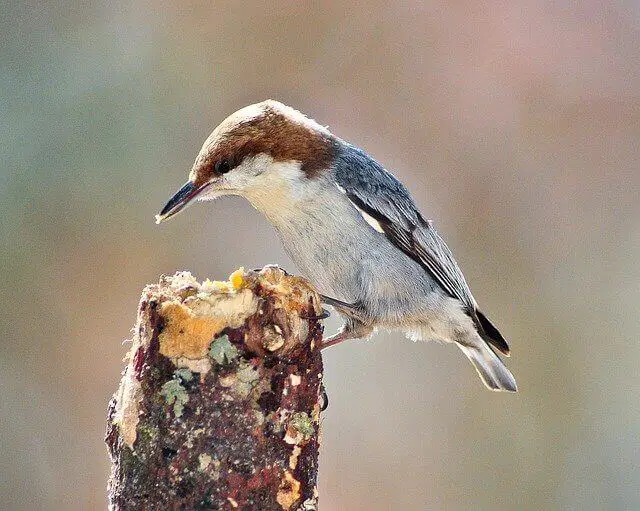
The Brown-headed Nuthatch is a bird in the family Sittidae. They are native to North America, and has been found to inhabit some areas of Canada and parts of the United States including Illinois, Indiana, Iowa, Kansas, Kentucky and Ohio.
Their habitat includes woodlands and forests with lots of understory vegetation. The Brown-headed Nuthatches diet consists mainly of insects, seeds, as well as nuts such as acorns or beechnuts.
Here’s a small table with length, weight, and wingspan information for the Brown-headed Nuthatch:
| Characteristic | Measurement |
|---|---|
| Length | Approximately 4.25 inches (11 cm) |
| Weight | Approximately 0.3 – 0.4 ounces (8 – 12 grams) |
| Wingspan | Approximately 7.5 – 8.5 inches (19 – 22 cm) |
Pygmy Nuthatch
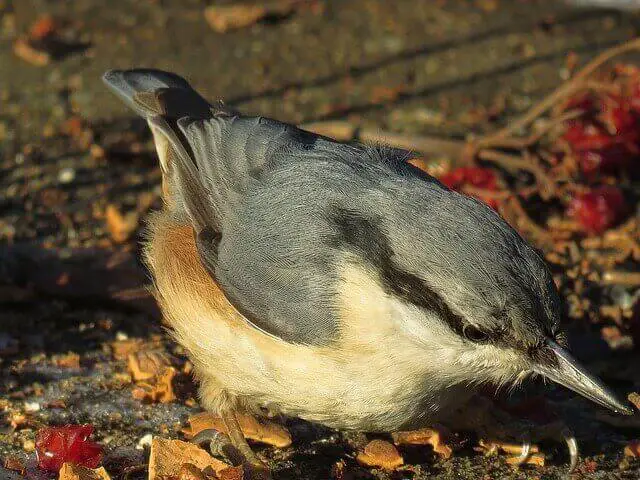
The Pygamy Nuthatch is a small bird that can be found in the Western United States. They live in mountainous regions and their range includes parts of California, Oregon, Nevada, Idaho, Montana and Wyoming.
These birds are mostly seen in pine forests or open woodlands with a variety of trees. Their diet consists mainly of insects, but they also eat some seeds as well as peanuts if they find them on the ground during winter months when it’s hard to find food elsewhere.
| Characteristic | Measurement |
|---|---|
| Length | Approximately 4.25 inches (11 cm) |
| Weight | Approximately 0.3 – 0.4 ounces (8 – 12 grams) |
| Wingspan | Approximately 6.5 – 7.5 inches (17 – 19 cm) |
White-breasted Nuthatch
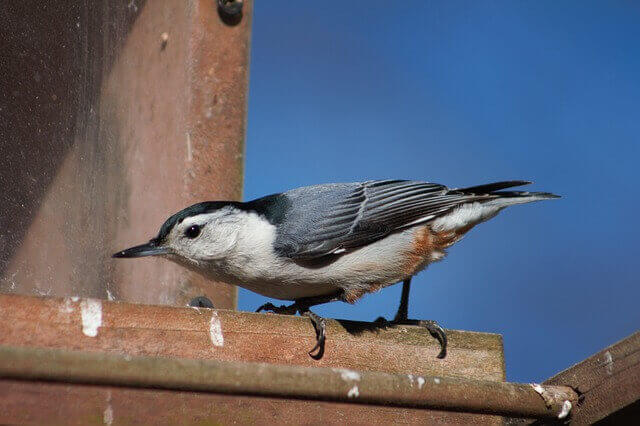
The White-breasted Nuthatch is a small bird found in North America. They are primarily found in the Eastern and Central parts of the United States, Canada, and Mexico. These birds feed on insects as well as nuts such as acorns and pine cones that they find or store for later use.
A white-breasted nuthatches diet consists mainly of insect larvae, tree sap from trees such as pine, oak, beech and maple; buds from apple trees, as well as eggs, fruits and nuts.
| Characteristic | Measurement |
|---|---|
| Length | Approximately 5.25 – 6.25 inches (13 – 16 cm) |
| Weight | Approximately 0.6 – 1.0 ounces (18 – 28 grams) |
| Wingspan | Approximately 7 – 8.75 inches (18 – 22 cm) |
Related Post: How to Attract Nuthatches to your Backyard? Expert Tips!
Red-breasted Nuthatch
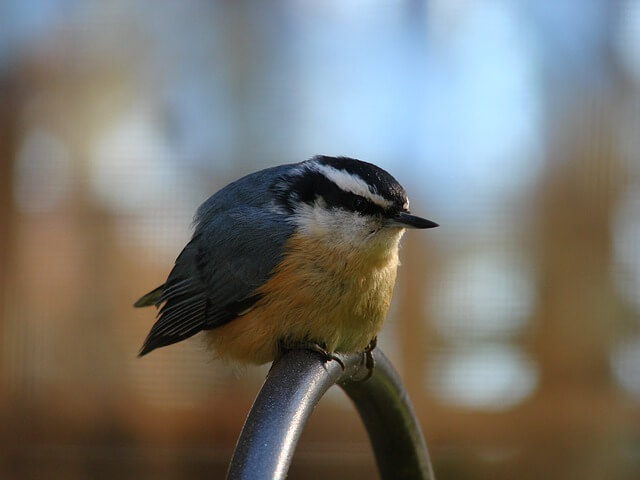
In the United States, Red-breasted Nuthatches live in southernmost Maine and extreme northeastern Oklahoma east of the Mississippi River and north to New York, Pennsylvania, Wisconsin, northern Minnesota and Oregon. They also live as far south as southern Texas, but are more common west of the Rocky Mountains.
Their habitats include forest edges, woodlands, suburbs and even urban areas where they nest in birdhouses or utility poles near food sources such as peanut feeders. Nuthatches eat insects during the summer months but rely on seeds, and nuts during winter from October through March.
| Characteristic | Measurement |
|---|---|
| Length | Approximately 4 – 4.75 inches (10 – 12 cm) |
| Weight | Approximately 0.2 – 0.3 ounces (5 – 9 grams) |
| Wingspan | Approximately 7.5 – 9 inches (19 – 23 cm) |
Northern Cardinal
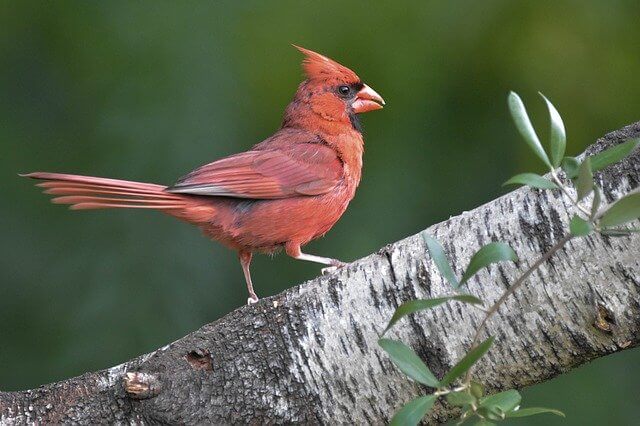
Northern Cardinals are an iconic bird species in the United States. The Northern Cardinal Range is located in the eastern part of North America, stretching from southeastern Canada to Florida and as far west as Oklahoma. It is also found along a line from Minnesota to New Mexico and up into Nebraska, Kansas, Colorado, Texas and Louisiana.
It has a habitat of mixed forests, gardens, and fields, with a diet consisting mainly of seeds, fruits and nuts. The birds also like peanuts, so if you want to attract them to your yard for bird watching or photography, then be sure to offer some peanut shells on the ground or hang some in the trees.
| Characteristic | Measurement |
|---|---|
| Length | Approximately 8 – 9 inches (21 – 23 cm) |
| Weight | Approximately 1.5 – 1.7 ounces (42 – 48 grams) |
| Wingspan | Approximately 9.5 – 12 inches (25 – 31 cm) |
Related Post:
- 10 Best Bird Feeders for Cardinals (Rated for 2022)
- 11 Birds That Look Like Cardinals (with Photos and Info)
- Cardinal Bird Facts Every Birdwatcher Should Know!
- Where Are Cardinals Found? Best Spots to Look!
European Starling
European Starlings are very common in the United States. They range from eastern North America to Alaska and south to Mexico, with their highest densities found in New England, California and Washington. European Starlings live in a variety of habitats including suburban areas, agricultural fields, parks and woodland edges but prefer open spaces such as marshes or meadows.
Their diet consists mainly of insects, worms, small rodents, nuts and berries. There is some evidence that European Starlings may like peanuts more than other types of food because they will feed on them when given the opportunity.
| Characteristic | Measurement |
|---|---|
| Length | Approximately 7 – 9 inches (19 – 23 cm) |
| Weight | Approximately 2.5 – 4.5 ounces (70 – 128 grams) |
| Wingspan | Approximately 12 – 16 inches (31 – 41 cm) |
Related Post: How To Attract European Starlings To Your Yard Fast?
Downy Woodpecker
The Downy Woodpecker is a type of woodpecker that ranges from southern Canada to the northern United States. They can be found in forests, parks and yards, but prefer mixed forests or pine plantations with large trees that have cavities for nesting.
The Downy Woodpeckers eat mainly insects but also other animals such as worms, slugs and spiders. They have been known to occasionally eat peanuts, which are left out by people who live in the area they inhabit.
| Characteristic | Measurement |
|---|---|
| Length | Approximately 5.5 – 6.7 inches (14 – 17 cm) |
| Weight | Approximately 0.7 – 1 ounce (20 – 28 grams) |
| Wingspan | Approximately 9.8 – 11.8 inches (25 – 30 cm) |
Related Post:
- How to Attract Downy Woodpeckers to Your Yard? (Easy!)
- 7 Birds That Look Like Downy Woodpecker (Explained)
American Crow
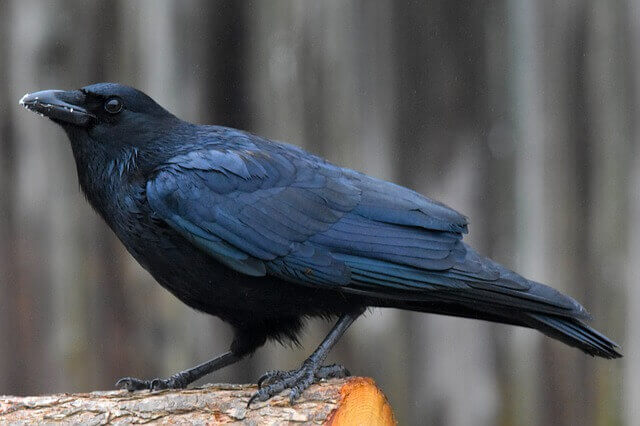
The American Crow is the most widespread bird in North America. It has a large range, with an estimated population of over 30 million individuals. The crows’ habitat ranges from southern Canada to Mexico and as far west as California.
They are typically found near water sources, or where food is available for them to scavenge. Their diet consists mainly of nuts, seeds, insects and small animals like frogs and mice. Crows will occasionally eat peanuts if given the opportunity.
| Characteristic | Measurement |
|---|---|
| Length | Approximately 16 – 21 inches (41 – 53 cm) |
| Weight | Approximately 11 – 21 ounces (316 – 595 grams) |
| Wingspan | Approximately 32 – 39 inches (82 – 100 cm) |
Related Post:
Tufted Titmouse
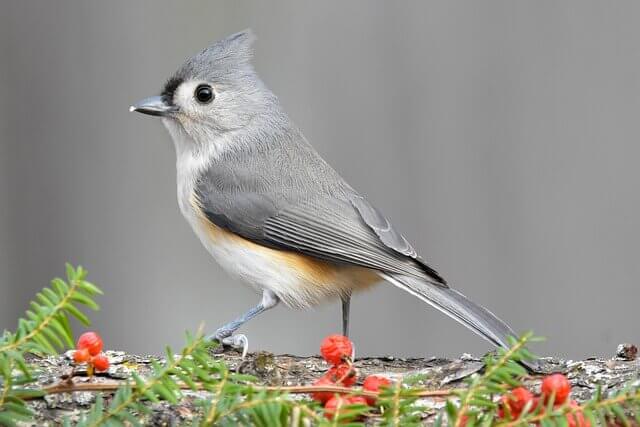
The Tufted Titmouse is a small songbird that ranges from Eastern Canada to the Gulf Coast of the United States. They live year-round in deciduous forests, preferring those with open canopies of oak or hickory trees.
The diet of the Tufted Titmouse consists mainly of insects such as beetles, ants and caterpillars; they also eat seeds, nut and berries like acorns, peanuts, dogwood and elderberry. The Tufted Titmouse is known for its cat-like calls and like other members of the tit family they have tufts on their head.
| Characteristic | Measurement |
|---|---|
| Length | Approximately 5.5 – 6.3 inches (14 – 16 cm) |
| Weight | Approximately 0.6 – 0.9 ounces (18 – 26 grams) |
| Wingspan | Approximately 7.9 – 9.1 inches (20 – 23 cm) |
Related Post: How to Attract Tufted Titmouse to my Yard? (Explained)
Oak Titmouse
The Oak Titmouse is a small bird with a short tail, dark eyes and white stripes on its head. It is mostly found in the Eastern United States and Canada, as well as some parts of Mexico. They live in woodlands, preferring trees for their habitat.
The Oak Titmouse eats mainly insects during the summer months, but also fruits and seeds from other plants when they are available during other seasons. They have also been seen eating peanuts from time to time.
| Characteristic | Measurement |
|---|---|
| Length | Approximately 5.5 – 6.7 inches (14 – 17 cm) |
| Weight | Approximately 0.6 – 0.7 ounces (17 – 20 grams) |
| Wingspan | Approximately 7.5 – 8.3 inches (19 – 21 cm) |
Northern Flicker
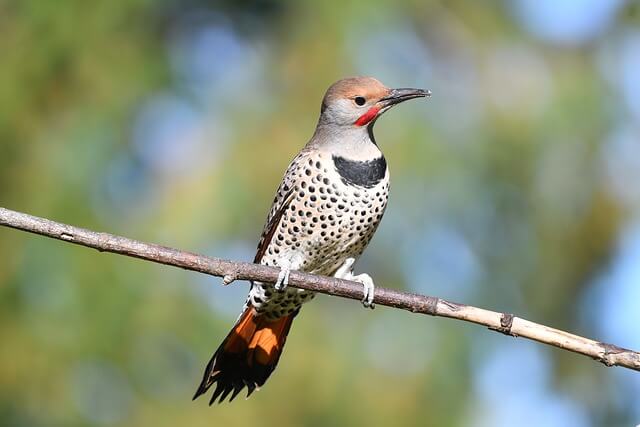
Northern Flickers are a member of the woodpecker family and can be found in North America. Their range is from southern Canada to northern Mexico, and they reside primarily in deciduous forests with an open understory where there are plenty of trees for them to forage on.
They prefer nuts such as acorns, walnuts, pecans, hickory nuts or hazelnuts which all make up their diet along with insects like ants or beetles.
| Characteristic | Measurement |
|---|---|
| Length | Approximately 11 – 12.5 inches (28 – 32 cm) |
| Weight | Approximately 3.9 – 5.6 ounces (110 – 160 grams) |
| Wingspan | Approximately 16.5 – 20 inches (42 – 51 cm) |
Related Post: How to Attract Northern Flickers to your Backyard (Easy)
Carolina Chickadee
The Carolina Chickadee is a small, non-migratory songbird that is native to the eastern United States. Their diet consists of seeds, nuts, insects and spiders, but they have been known to eat peanuts if given the opportunity.
They live in areas with an abundance of shrubs and trees, which are important for nesting. Carolina Chickadees typically nest from March through September on horizontal limbs or forks near the trunk of a tree or bush; they will also nest under eaves, porches, decks, etc.
| Characteristic | Measurement |
|---|---|
| Length | Approximately 4.5 – 5.1 inches (11 – 13 cm) |
| Weight | Approximately 0.3 – 0.4 ounces (9 – 12 grams) |
| Wingspan | Approximately 6.7 – 7.5 inches (17 – 19 cm) |
Related Post: Carolina Chickadees – 9 Best Ways To Attract Them Fast!
Chestnut-backed Chickadee
The Chestnut-backed Chickadee is a type of bird that resides in the Western United States. The range spans from California to Alaska and includes parts of British Columbia, Idaho, Montana, Oregon and Washington.
They prefer dense forests with plenty of coniferous trees, but will also live in deciduous trees if necessary. Their diet consists mainly of insects such as beetles, ants and caterpillars. There are some occasions where they eat berries or nuts, but these make up less than 5% of their diet.
| Characteristic | Measurement |
|---|---|
| Length | Approximately 4.5 – 5.1 inches (11 – 13 cm) |
| Weight | Approximately 0.3 – 0.4 ounces (9 – 12 grams) |
| Wingspan | Approximately 7.1 – 7.5 inches (18 – 19 cm) |
Black-capped Chickadee
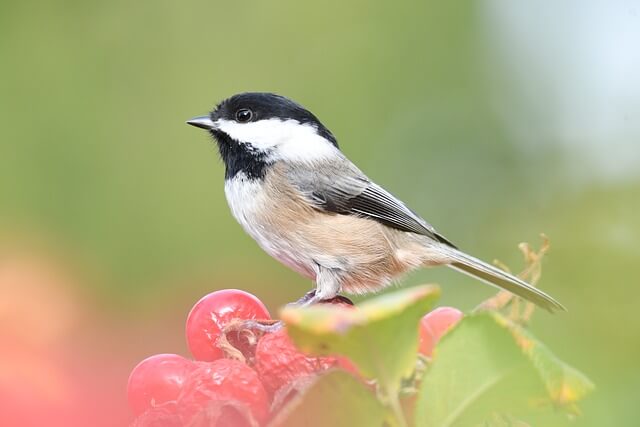
The black-capped chickadee, is a common, small, North American songster that usually lives in mixed and deciduous forests in which to thrive. Though they primarily feed on insects and larva, but they are also known to eat carrion and invertebrates.
During winter, you can hang bird feeders and provide them with, shelled peanuts to attract these birds since they prefer to eat these kinds of food. You can also provide a variety of foods, such as suet and berries, which the birds find sweet and nutritious.
| Characteristic | Measurement |
|---|---|
| Length | Approximately 4.25 – 5.75 inches (11 – 15 cm) |
| Weight | Approximately 0.3 – 0.5 ounces (8 – 15 grams) |
| Wingspan | Approximately 6.3 – 8.3 inches (16 – 21 cm) |
Related Post:
- Best Bird Feeder For Chickadees (The Ultimate Guide 2022)
- How Do I Attract Chickadees To My Yard (Expert Tips)
Mountain Chickadee
The Mountain Chickadee is a small bird that ranges from the northern United States to Mexico. The mountain chickadee can be found in forests, orchards and parks and sometimes on lawns where they feed on insects.
They are generally solitary birds, but will occasionally nest with other species of birds. Mountain Chickadees primarily eat insects, seeds, nuts and berries as well as suet cakes left out for them by humans.
| Characteristic | Measurement |
|---|---|
| Length | Approximately 5.25 – 5.75 inches (13 – 15 cm) |
| Weight | Approximately 0.4 – 0.5 ounces (11 – 14 grams) |
| Wingspan | Approximately 7.9 – 8.7 inches (20 – 22 cm) |
Common Grackle
The common grackle, is an uncommon but beautiful member of the avian family, the crows. This active bird also loves to forage on the ground for insects, berries, seeds, fruit, bird eggs, although it is also known to eat snakes and frogs. Though they are most active in the early morning and late evening when the sun is high, common grackles will also feed during other times of the day.
Like most birds of prey, grackles prefer open areas with lots of greenery and food. They are not aggressive and usually avoid conflict if possible. In the fall when there is an abundance of food and animals around, they are often seen hovering near fences, bird feeders, trash bins, and other sources of food and water.
| Characteristic | Measurement |
|---|---|
| Length | Approximately 11 – 13 inches (28 – 33 cm) |
| Weight | Approximately 4 – 5.3 ounces (115 – 150 grams) |
| Wingspan | Approximately 14.2 – 18.1 inches (36 – 46 cm) |
Red-bellied Woodpecker
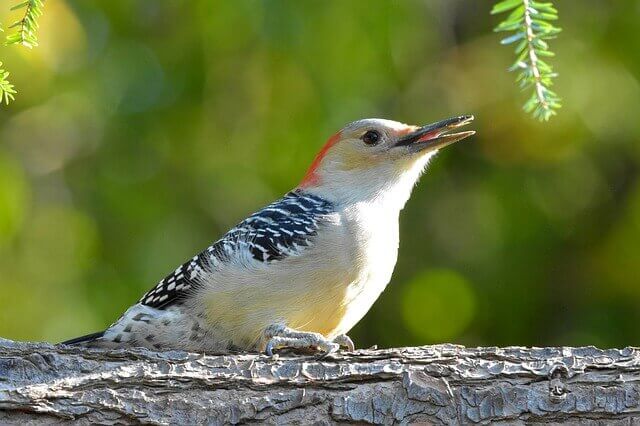
The red-bellied woodpecker is a common sight in North America. It can be found throughout the eastern United States and as far west as Kansas, Texas, New Mexico and Arizona. They are also known to visit parts of Canada during the winter months. They are found most often in heavily forested areas, but can also be seen near agricultural fields or suburban yards with trees.
Their habitat consists of lowland forests including pine and oak forests and dense understory vegetation. The Red-bellied Woodpecker has an interesting diet consisting mostly of insects such as ants, beetles, wasps and bees. Other sources of food include nuts, seeds and fruits such as berries.
| Characteristic | Measurement |
|---|---|
| Length | Approximately 9.25 – 10.5 inches (23 – 27 cm) |
| Weight | Approximately 2 – 3 ounces (56 – 85 grams) |
| Wingspan | Approximately 13 – 16 inches (33 – 41 cm) |
Related Post: How to Attract Red-bellied Woodpeckers to your Yard?
Ladder-backed Woodpecker
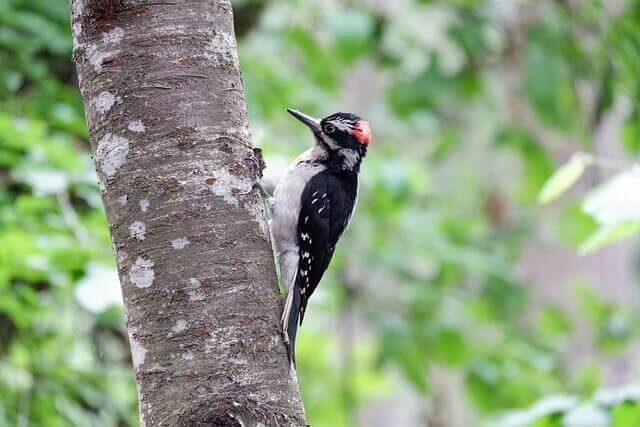
The ladder-backed woodpecker belongs to the family of medium-sized. They are found throughout the north-eastern parts of the United States, along the Pacific coast from California to Alaska and on to southern Canada and the United States’ Eastern States. There is also a population in Mexico.
These birds feed on small berries, suet, peanuts, and other insects that are found on tree branches, feeding off them as they perch. Their long bills, narrow wings, and short wings give them a unique appearance. The ladder-back woodpeckers are the most popular of the species.
| Characteristic | Measurement |
|---|---|
| Length | Approximately 7 – 7.5 inches (18 – 19 cm) |
| Weight | Approximately 1.1 – 1.5 ounces (30 – 42 grams) |
| Wingspan | Approximately 13 – 15 inches (33 – 38 cm) |
Blue Jay
Blue Jays are found in the eastern and central United States, parts of southern Canada, and Central America. It has a range of habitats including forests, suburban areas, and even urban areas where there are trees with overhanging branches for nesting purposes.
They eat insects such as beetles, caterpillars, flies and ants; berries from trees like dogwood, poison ivy and sumac; tree sap; fruit from cedar waxwings’ roosts such as cherries or juniper berries. It’s believed that peanuts in shells are a favorite food of Jays.
| Characteristic | Measurement |
|---|---|
| Length | Approximately 11 – 12 inches (28 – 31 cm) |
| Weight | Approximately 3.5 – 5.3 ounces (99 – 150 grams) |
| Wingspan | Approximately 16 – 17 inches (40 – 43 cm) |
Related Post:
- 15 Best Bird Feeders For Blue Jays (Tried & Tested 2022)
- What does a Blue Jay look like? Tips to identify them!
- What Attracts Blue Jays to your Yard?(Expert Tips)
Steller’s Jay
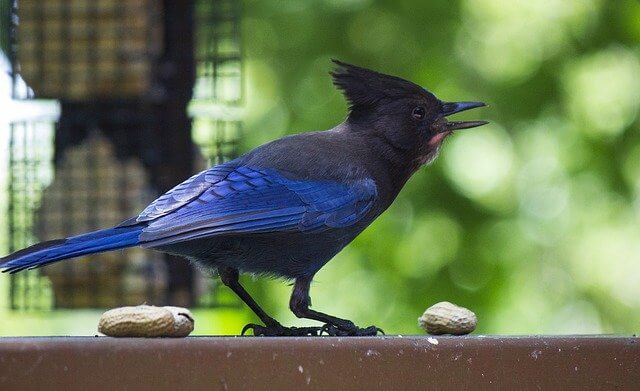
Steller’s Jay is an uncommon yet beautiful bird that resides in the sagebrush forests and grasslands of central Mexico. In the northern part of its range, it is seen from coastal Southeast Alaska across the Coast Mountains into southern Yukon Territory. These jays will visit feeders and prefer shelled raw peanuts, cracked corn, white-striped sunflower seeds, black-oil sunflower seeds.
Suet is also consumed, but mostly in winter. They will also not feed from grapes, acorns, or any other tree or shrub berries. You should provide them with a birdbath, so that they have a source of fresh drinking water to quench their thirst.
| Characteristic | Measurement |
|---|---|
| Length | Approximately 11 – 12 inches (28 – 31 cm) |
| Weight | Approximately 3.5 – 5.3 ounces (99 – 150 grams) |
| Wingspan | Approximately 16 – 17 inches (40 – 43 cm) |
Related Post: How to Attract Steller’s Jay to your Yard – Expert Tips!
California Scrub-Jay

The California scrub-jay is a unique species of scrub jays native to western North America, lying between southern British Columbia and northern Nevada in the southwestern part of the west. The scrub-jay is particularly common in coastal areas along the Pacific Ocean, though it has also been recorded from the Santa Cruz Mountains, the mountains of San Miguel, and the deserts of Riverside and San Diego.
These birds inhabit areas of mixed evergreen forests, low scrub, preferring pinon-juniper forests, and oak woods. Scrub-jay food sources are small fish and clams, small animals, such as frogs and lizards, eggs and young birds, insects, grains, nuts, and berries.
| Characteristic | Measurement |
|---|---|
| Length | Approximately 11 – 12 inches (28 – 31 cm) |
| Weight | Approximately 2.8 – 3.6 ounces (80 – 102 grams) |
| Wingspan | Approximately 15 – 16 inches (38 – 41 cm) |
Canada Jay
The Canada Jay, also called the gray jay, is a passerine bird of the avian family Corvidae , with colorful plumage and a sweet song. It is commonly found in coastal waters of North America east of the tree line, to the tundra, and in boreal forests between the tree line and the mountain range. The Canada Jay is among the most popular of all common birds in North America.
It is a regular visitor to park aviaries and bird feeders and is a frequent visitor to backyard bird feeders. It also likes to feed in backyards and stands on trees in fields. The Canada Jay are omnivorous. Their most preferred food sources are nuts, small mammals, arthropods, rodents, and young birds.
| Characteristic | Measurement |
|---|---|
| Length | Approximately 11 – 13 inches (28 – 33 cm) |
| Weight | Approximately 2.3 – 3.6 ounces (65 – 102 grams) |
| Wingspan | Approximately 16 – 18 inches (41 – 46 cm) |
Clark’s Nutcracker
Clark’s Nutcracker, sometimes called Clark’s woodpecker or woodpeckers, is a common passerine (or passenger) bird found in the forests of central North America. It is considered to be a lower migration bird, as it winters in southern areas of the continent, and migrates south in response to milder temperatures in winter. It is frequently seen throughout Central and Western U.S., excepting Alaska and some portions of Mexico.
Its beautiful iridescent chestnut breast and throat markings make it a lovely bird for early spring bird watchers. The diet consists of insects, berries and fruits, and occasionally small mammals. The best way to attract them to your backyard feeder, is by offering them peanuts or suet.
| Characteristic | Measurement |
|---|---|
| Length | Approximately 11.5 – 13.5 inches (29 – 34 cm) |
| Weight | Approximately 2.5 – 3.5 ounces (71 – 100 grams) |
| Wingspan | Approximately 16.5 – 18.5 inches (42 – 47 cm) |
Mourning Dove
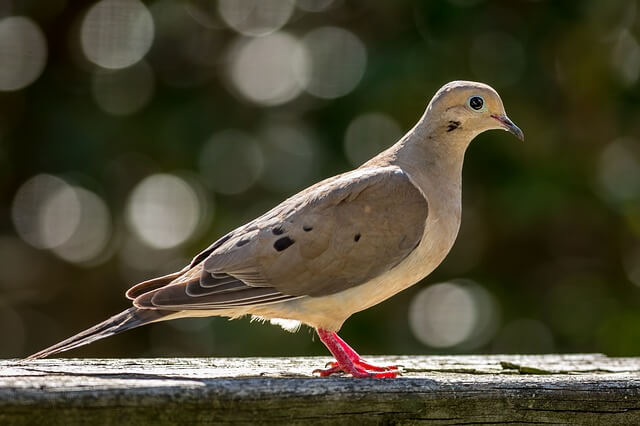
Mourning Doves are often considered the most common bird in North America. These birds inhabit a range that stretches from the Eastern United States, to California and Florida. Their habitat includes forests, grasslands, deserts and scrub lands. Mourning Doves also live in agricultural areas, where they eat corn and other grains such as oats or wheat during the winter months when food is scarce.
Mourning doves have been known to visit homes for seed feeders containing peanuts (which makes them popular with birdwatchers). During the winter months, mourning doves will travel up to 200 miles south in search of food (during this time they are often found around homes).
| Characteristic | Measurement |
|---|---|
| Length | Approximately 9 – 13 inches (23 – 33 cm) |
| Weight | Approximately 3.5 – 6 ounces (100 – 170 grams) |
| Wingspan | Approximately 17.5 – 18.5 inches (44 – 47 cm) |
Related Post:
- Facts About Mourning Doves – 10 Things You Need To Know!
- Best Bird Feeder For Doves (Reviewed & Tested for 2022)
Check out this article: Can Birds Eat Peanut Butter? (What You Need To Know!)

